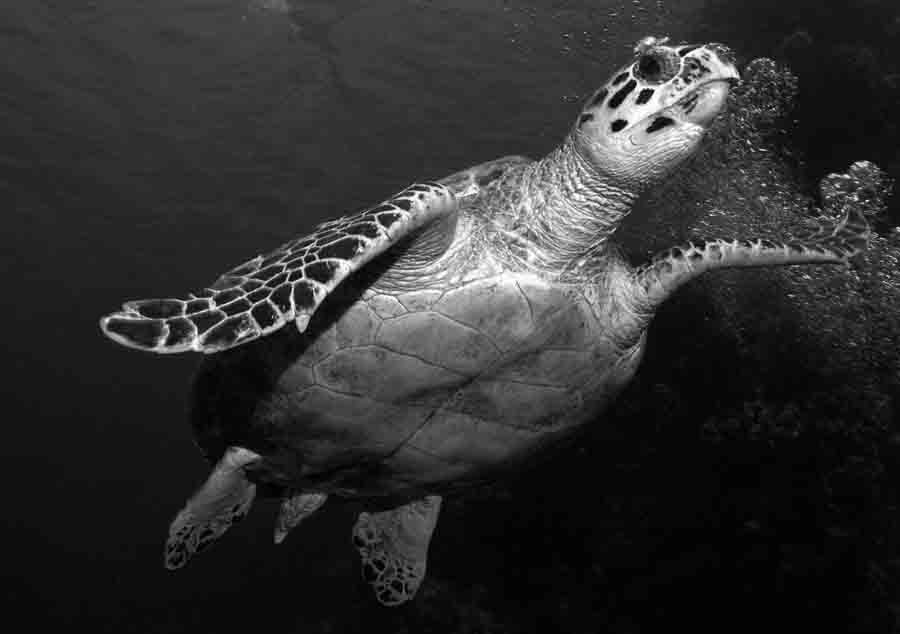Buddha’s buddy:
Siamese crocodile
“Crocodile wrestling is actually not as hard as it looks if it’s well coordinated – you just have to beware of the sharp pointy end,” says Adam Starr, of Fauna & Flora International’s award-winning Cambodian Crocodile Conservation Project. He speaks from experience: Siamese crocodiles, Crocodylus siamensis, were believed almost extinct in the wild until 2009 when DNA testing revealed that 35 pure-breds had been hiding in plain sight at Phnom Tamao Wildlife Rescue Centre. The discovery made possible the centre’s first captive breeding programme and sole survivor Rathana was moved to the facility’s brand new rearing ponds in January, but not before a monk from the local pagoda gave him and his new home a blessing.
“One of the most fascinating things about working with Siamese crocodiles is the links this species has to Buddhism,” says Starr. “An old Buddhist myth tells of the loyalty crocodiles have to the Buddha: they were summoned by the Earth goddess to protect him from evil at the moment he achieved enlightenment. You see evidence of this connection everywhere: funeral flags, statues at pagodas, and ceremony banners. But sadly, the symbolism doesn’t hold as strong among most modern day communities. There is still much more work that needs to be done to ensure this flagship species isn’t once again declared as ‘effectively extinct in the wild’, which it was by the IUCN in 1992.
“If you’ve ever held a croc hatchling, or looked closely into their cat-like eyes, you’d understand why they’re so cool and why it’s important to protect them.” Adam’s mother took a slightly different stance when she first heard of his plans to work with them (“You’re doing what?!”). To date, however, there have been no reports of Siamese crocodiles attacking humans. “Even when reviewing old literature, biologist Dr Malcom Smith wrote in 1919 that ‘The Siamese crocodile does not appear to be a particularly aggressive creature. Country people certainly seem to have little fear of them, and do not hesitate to swim in the waters known to be inhabited by these creatures.’”
Winged hummer:
Bengal florican
Also known as the Bengal bustard, this large grassland dweller – Houbaropsis bengalensis – has the dubious distinction of being one of the rarest birds on the planet. Fewer than 500 are believed to exist in the wild, most of them centred on the Tonle Sap Great Lake in Cambodia. Every year, the Wildlife Conservation Society embarks on a headcount by tallying the number of mate-chasing males, notable for the strange deep humming sound they emit while trying to catch a female’s eye (non-mating males and females are famously elusive, making them almost impossible to count).
“Males leap into the air, high above the grass, puffing out their black neck feathers and flapping their contrasting white wings,” says Simon Mahood, of the Wildlife Conservation Society. “Males display together in leks, which females visit to choose their mates so that they can evaluate what’s on offer that year. The females skulk around in the grass, so they’re hard to see. Once they’ve done their displaying (and been counted), they mate with the females and play no further part in the rearing of the young. Females are very vulnerable to nest predation, both by humans and other animals, so if local people find a nest we pay them to protect it.”
Between 2009 and 2010, WCS recorded 88 displaying males on the Tonle Sap floodplain, home to the world’s largest breeding population. The 54% increase on the previous year’s head-count was positive news for the protected element of this notoriously fussy bird. “The floricans are very picky about the sort of grassland they like to nest in,” says Mahood. “They like land that is lying fallow after cultivation for wet-season rice. Irrigated dry-season rice and rain-fed rice won’t cut it for them. Consequently, we support local people to continue traditional wet-season rice cultivation, while supporting them to defeat companies and wealthy individuals who steal their land for cultivation of dry season rice.”
Hero in a half-shell:
hawksbill turtle
“Marine turtles are a prosperous and respected animal in Cambodian culture,” says Ko Socheata, of Fauna & Flora’s marine conservation team. “People feel very close to them. If turtles are accidentally caught, fishermen traditionally get them blessed by a monk, apologise to them, write their name on the shell and wish for good luck and happiness before releasing them back into the sea. ‘You cannot stand it when the turtle’s tears come out if you bring it onto the land’, one fisherman told us. If anyone catches the same turtle later, they have to release it otherwise they will be cursed with bad luck.”
As well they should be: not so long ago, FFI caught wind of three green turtles that had been held for more than six months by one fisherman in order that they could be released on his birthday ‘for luck’. By the time conservationists intervened, two of them were already dead. “This is a significant threat to remaining turtle populations in Cambodia, so we are working closely with the local communities and Fisheries Administration to raise awareness of turtle conservation issues and reduce local consumption of turtles and their eggs, provide protection for turtles on nesting beaches and ensure any turtles caught are released straight away back into the sea.”
The hawksbill turtle, Eretmochelys imbricate, faces perhaps the greatest threat of all. “Hawksbill turtles particularly are poached for their beautiful shells, prized in many countries as decorations, jewellery, and other curios, particularly in Japan where the local name for the shell is bekko. Throughout Southeast Asia it has become increasingly rare to see these turtles on diving and snorkelling expeditions. In addition to poaching, fisheries by-catch (particularly trawlers and gillnets), coastal development, egg collection and disturbance of nesting beaches have also led to a significant decline in marine turtle populations in Southeast Asia, some to the brink of extinction.”



